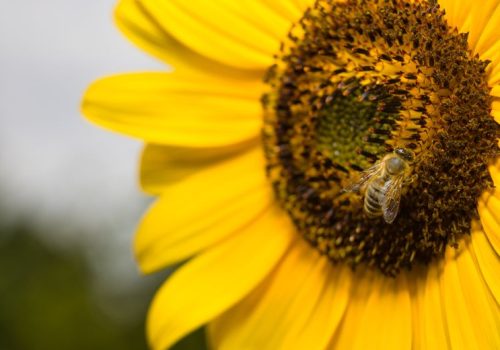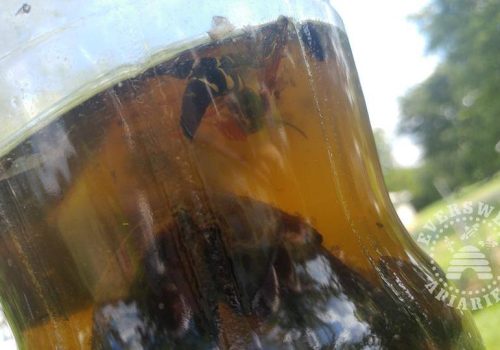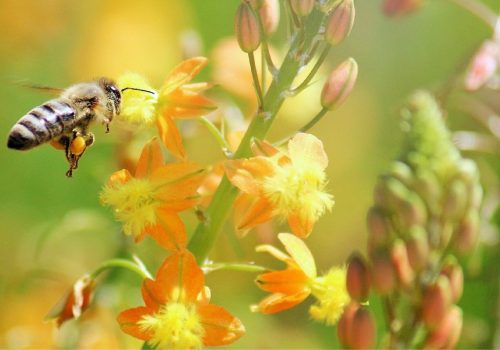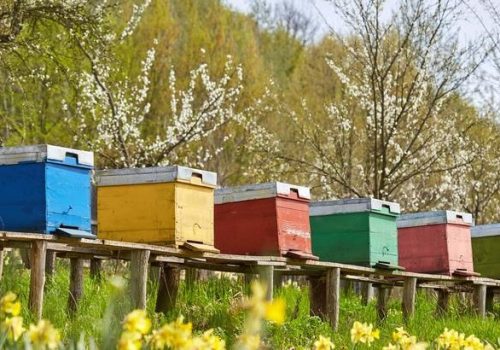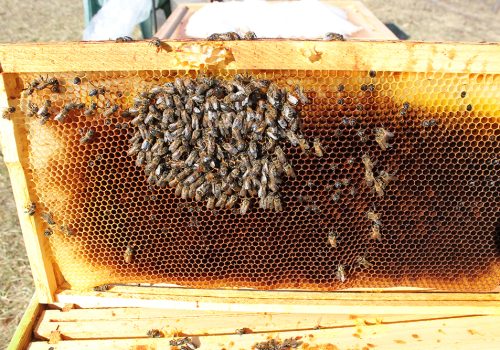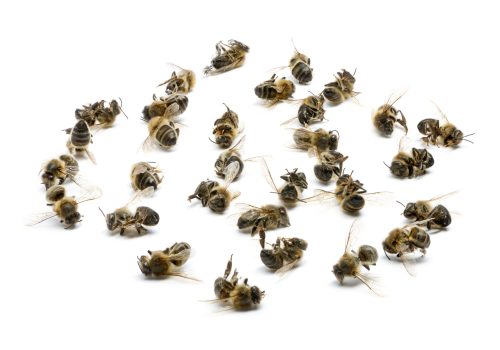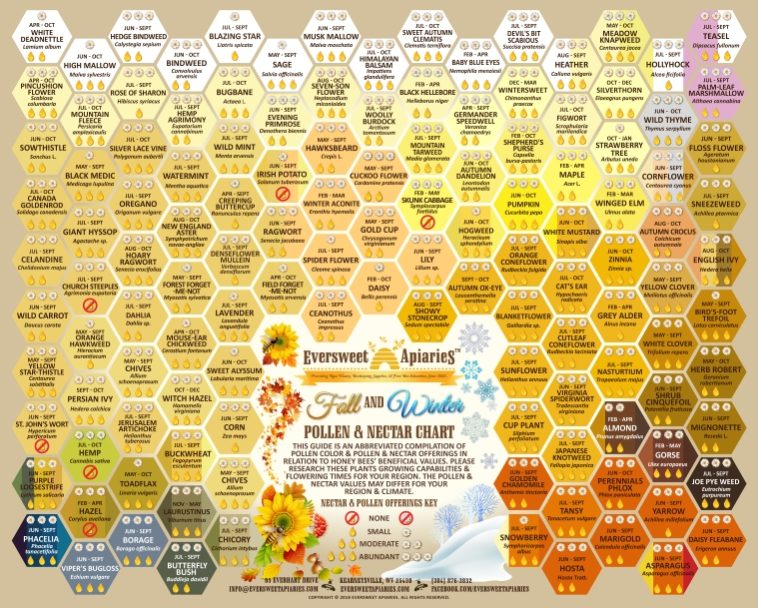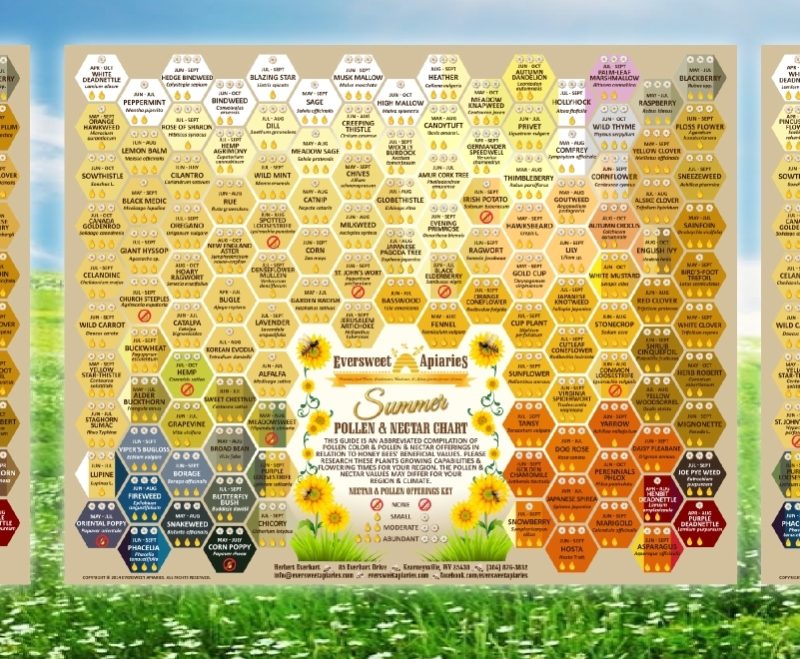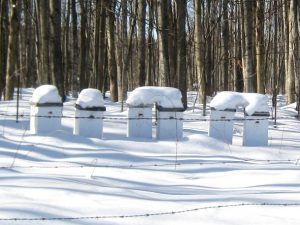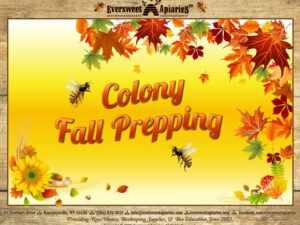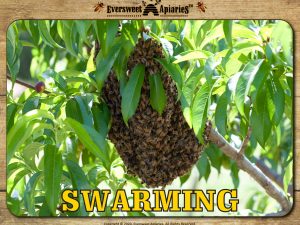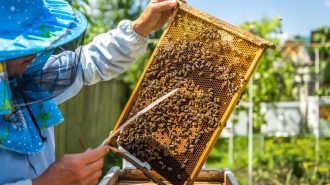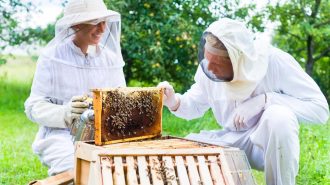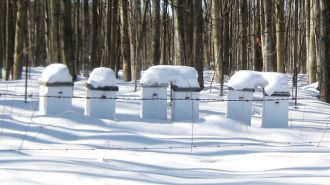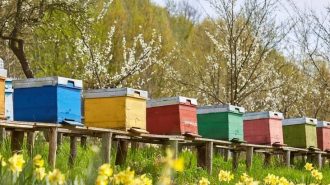Package Bee Installation
Be sure to have your hive bodies ready to receive your packages. In the West Virginia tri-state area, mid-March is acceptable for installing packages if you have at least 5 frames of drawn comb and a frame of honey. Mid-April is better for installing packages because there is more nectar and pollen available to aid in rearing brood and building comb.
Do not accept a package if the bottom is covered with one-half inch or more of dead bees.
If you cannot install your package right away, place it in an area of 50-70 degrees, draft-free, and in low light or darkness. The package you have accepted can be kept for up to three days by spraying the cage with 1:1 sugar water. Of course, weather permitting, you want to install a soon as possible.
Installing your package can be accomplished in many ways. You do not need to cover the bees with sugar water to slow flight or to smoke them. The best packages contain all young, nurse bees that have never flown and are very docile. These bees were shook into packages during the day when the field bees were not present.
Remove the small wooden cover from the top of the package, have five frames or foundation removed so that the package can be placed down in the deep body. You can do the same by taking two medium boxes and adding five frames in the second box, thus leaving a depth to drop the package into.
Now give the package one sharp bounce to knock the bees to the bottom of the package container. Remove the sugar can with the aid of your hive tool, reach in and remove the queen and quickly replace the small wooden cover.
Make sure the queen is alive and active. Install the queen, screen side down, on comb after removing the cork from the candy end. The candy end should face up so any dead attendant bees will not block the exit. It is not necessary to poke holes in the candy. The wire face on the cage should be exposed so the loose bees can feed the queen and the attendant bees. You can hang a queen cage or use pins to install on lower frame of foundation if no comb is available.
The queen is kept warmer with a lower installation than placing on or between the top bars or in feeder spaces. Shake a small cluster of bees (two handfuls of bees) onto queen.
Place your package down into the empty space made available by frame removal. Close the hive and in 12 hours or so the package should be empty. The bees will come out of the shipping cage on their own. If outside temperature is 50 degrees or less it is better to shake the bees into the hive. Shaking is less desirable as it does small injuries to the bees and dead bees end up in hives. The live bees will remove the dead bees later. Remove the cage, replace the frames, and close up using only one box for brood.
To prevent packages from absconding, close the hive up for a few days. Make sure the hive is well ventilated with a bottom screen. Also make sure they have food available (honey or sugar water and pollen patties). Close the entrance up using 1/8 hardware cloth, newspaper, or a piece of foam rubber. They will begin making the hive their home by building wax and spreading pheromones. Closing up the hive is also effective for preventing newly captured swarms from absconding.
Package Care and Maintenance
Use only one hive body if foundation still needs to be drawn as placing more than that will sometimes result in the bees robbing foundation wax for capping brood. A second brood box can be added after all foundation is drawn in the first box. Using only one brood box also keeps the bees close to their food source if using hive top feeders. Division feeders are beneficial at this time of year.
Since most are nurse bees with hardly any foragers you will need to immediately feed them if your hive doesn’t have honey and pollen stores. 1:1 sugar water must be supplied until the nectar flow starts. Pollen patties are a very good idea at this time as the weather may not be conducive for flight and no pollen may be available. Pollen equals protein which equals brood.
If you can obtain two frames of drawn comb from a reputable apiary this will be an excellent boost to starting a package as it provides a place for queen installation as well as a place for the bees to cluster in comfort. Packages tend to abscond more. Without the presence of brood to take of, bees will have one less thing tying them to the hive. Having some drawn comb will help to prevent absconding and the queen will have something readily available to lay on.
Treat with oxalic acid (vapor) before the packages are installed. Hop-Guard is good as well. Place two Hop-Guard strips in the same area as the queen cage for mites. OA and Hop-guard serves to kill the phoretic mites (the mites on the bees). At this time there is no brood so the strips work to kill most of the mites on the bees.
About a week or so after installation of the package, if you have or can get a frame of brood covered in nurse bees it will greatly help the package develop. If you add another deep frame, you will probably get a honey harvest from this package. You will have added thousands of wax secretors who will finish two boxes of foundation into comb in short order.
In four to five days after installation, check to see if the queen is present. If you see eggs and larvae you have a queen. Look no further as the least amount of disturbance is best. Perform regular 10 day inspections. In the first three weeks a third of the population will die. In another three weeks your original population should be back and your hive will continue to grow.

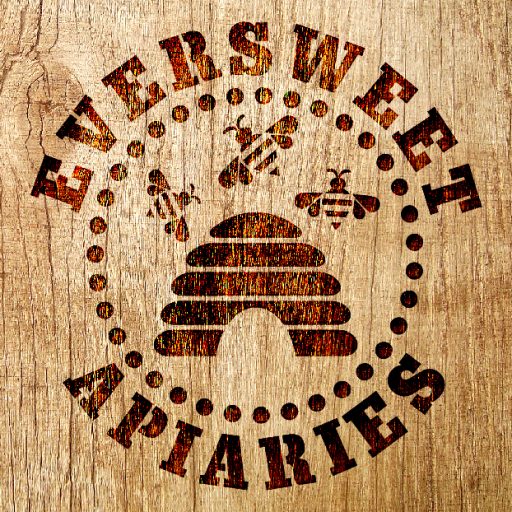 EversweetLearn how to help your hives survive winter! Topics discussed are geared for the mid-Atlantic region, however, concepts/methods can be applie...Beginner1 Lectures1.5 hours$25
EversweetLearn how to help your hives survive winter! Topics discussed are geared for the mid-Atlantic region, however, concepts/methods can be applie...Beginner1 Lectures1.5 hours$25 EversweetBe sure to get the best info about how to prepare your bees for fall/winter! Our Colony Fall Prepping Class is available online to view atBeginner1 Lectures1.5 hours$25
EversweetBe sure to get the best info about how to prepare your bees for fall/winter! Our Colony Fall Prepping Class is available online to view atBeginner1 Lectures1.5 hours$25 EversweetLearn how to prevent and control honeybee swarming!Beginner1 Lectures1.5 hours$25
EversweetLearn how to prevent and control honeybee swarming!Beginner1 Lectures1.5 hours$25

